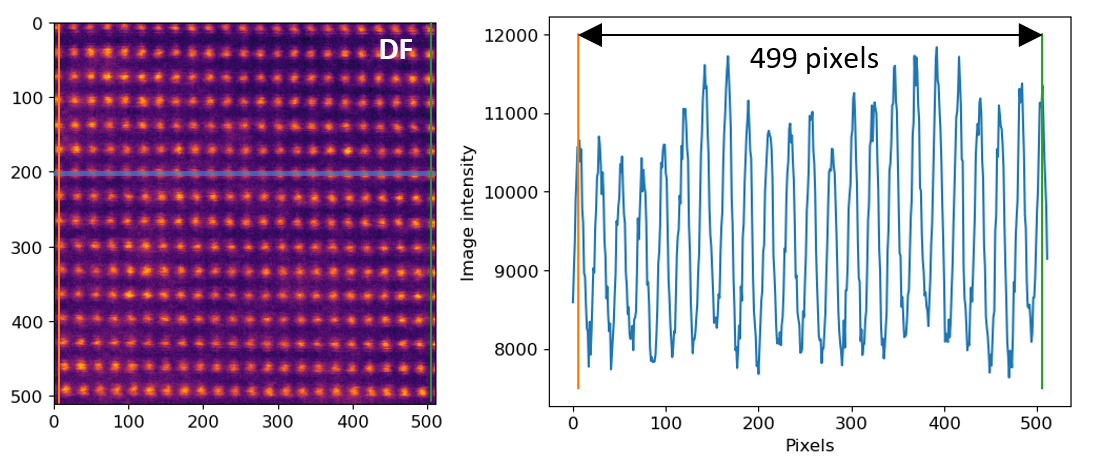Home page
Crucial point in proper data acquisition design is adjusting calibration file to used microscope. Basic description and units are included in the file calibrations.xlsx - sheet HELP. Calibrations can be divided into groups based in its origin.
- Nominal parameters which are given by STEM or detector manufacture and can be found in instructions or in their control software (beam energy, magnification levels, scanning unit matrices, detector pixel array size, pixel size).
- Measured parameters like real beam semi-angle, beam diameter at 0 defocus, probe current, detector camera length, angular limitations caused by differential pumping aperture, scanning pixel size correction.
- Computed parameter is then single pixel angle cover (dependent on used detector and its camera length).
Probe semi-angle
PAAR - Pumping Aperture Angular Restriction
Detector camera length
Pixelated STEM detector is located at a different position compared to level of nominal camera length (dedicated STEM detectors in our case). Real camera length to the pixelated detector has to be measured for each available nominal camera length. Otherwise wrong detector cover angle is used in reconstructions.
Scanning step correction
Scanning step size is given by magnification and number of scanning points giving together field of view. In reality, original calibration may not be perfectly accurate and own re-calibration may be needed. Scanning step calibration is based on known inter-atomic distance. In our case SmB6 in [110] orientation where Sm to Sm distance is 2.92 or 4.13 A respectively. Line of 23 Sm atoms was imaged in 499 pixels, 1 pixel is 22 * 2.92 / 499 = 0.1287 A. Microscope field of view at 30e6 magnification is 7.154 nm here divided into 512 pixels (pixel 0.1397 A). Correction factor between real and nominal pixel size is then 0.1287/0.1397 = 0.9212 = 92.12 %
 Pixel size calibration on SmB6 sample. Known Sm to Sm distance (2.92 A) is recalculated into real pixel size. Line profile is computed as sum of 7 rows to suppress image noise.
Pixel size calibration on SmB6 sample. Known Sm to Sm distance (2.92 A) is recalculated into real pixel size. Line profile is computed as sum of 7 rows to suppress image noise.